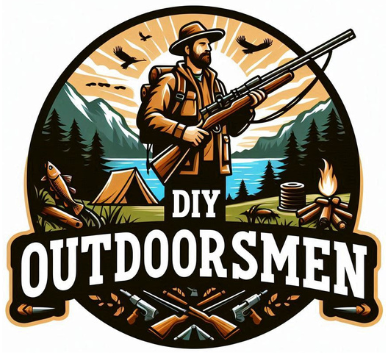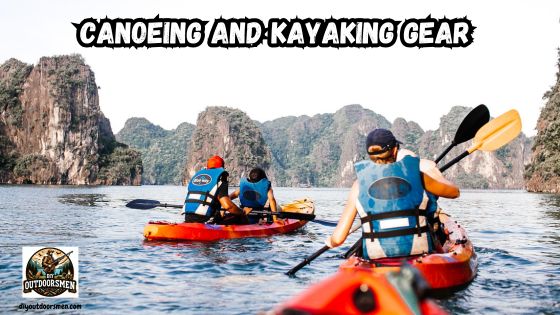Contents
- 1 Essential Gear for Canoeing and Kayaking Beginners
- 2 Getting Started with Canoeing and Kayaking
- 3 Things to Consider When Choosing Your Gear
- 4 Basic Safety and Preparation Tips
- 5 Advanced Tips and Tricks
- 6 Building Community and Learning from the Pros
- 7 Preparing for the Unexpected
- 8 Wrapping Up My Experience with New Gear
Starting with canoeing and kayaking can be both exciting and a little overwhelming. I remember my first time on the water and the importance of having the right gear was clear from the start. In this article, I share the top 10 must-have gear for beginners like me.
QUICK LOOK: Canoe and Kayak Gear for Beginners
- 1. Canoe or Kayak: Your vessel is the center of your adventure. I recommend choosing one that fits your size, offers stability, and feels comfortable to maneuver. Look for designs with a seating arrangement that allows you to maintain balance in different water conditions.
- 2. Paddle: A well-fitting paddle is critical for efficient movement. I figured out that lightweight paddles not only reduce fatigue but also help you maintain proper technique. The length and material of the paddle should match your style of paddling.
- 3. Personal Flotation Device (PFD): Safety on the water is always a priority. A good PFD fits snugly and stays in place, ensuring that you remain buoyant in case you fall into the water unexpectedly. I have learned that even experienced paddlers benefit from wearing one at all times.
- 4. Spare Paddle: Carrying a spare paddle can be an essential safety measure. Should your primary paddle break or go missing, having a backup means you are never stranded far from shore. This extra gear gives you peace of mind during your outing.
- 5. Dry Bag: Protecting your belongings is vital, especially during longer trips. I use a dry bag to secure items such as keys, a phone, and snacks, keeping them safe from water exposure. This gear is particularly useful when unexpected splashes occur.
- 6. Bilge Pump: Water often finds its way into a kayak or canoe. A bilge pump helps remove water that accumulates inside your vessel. When I first started paddling, I quickly learned that having an efficient pump makes the difference between a smooth trip and unnecessary delays.
- 7. Whistle: In case of emergencies, a whistle acts as an audible signal for help. It is a simple but effective tool to alert others when you need assistance. I always keep mine attached to my gear for a quick call for attention if needed.
- 8. Wetsuit or Dry Top: When paddling in colder weather or water, keeping warm is crucial. A wetsuit or dry top can protect you from the chill and help maintain body temperature. I found that even on mild days, an extra layer can significantly improve comfort.
- 9. Sprayskirt: For those using kayaks, a sprayskirt is an essential addition. This waterproof cover prevents water from entering the cockpit, making your ride more comfortable and safer during sudden weather changes. I recommend using one when planning trips in areas prone to unexpected rain or rougher water conditions.
- 10. Appropriate Layering and Clothing: Dressing in layers allows you to adjust your clothing to various temperature and weather conditions. I always wear a moisture-wicking base layer, an insulating mid-layer, and a waterproof outer layer. This simple strategy helps you stay comfortable and ready for any changes in the environment.
Each piece of equipment helps give a boost to safety, comfort, and enjoyment while paddling. I hope my insights help you select the gear that suits your needs as you build confidence on the water.
Essential Gear for Canoeing and Kayaking Beginners
My journey into canoeing and kayaking taught me that having the proper gear makes a big difference. Beginners need equipment that is easy to use while ensuring safety and a fun experience.
I list the top 10 items that I believe are core to a successful outing on calm waters or even more adventurous settings. While some items are essential for every paddler, others prepare you for changes in weather or unexpected events.
Below is a breakdown of the top 10 must-have gear, along with a description of how each item contributes to your overall paddling experience:
- 1. Canoe or Kayak: Your vessel is the center of your adventure. I recommend choosing one that fits your size, offers stability, and feels comfortable to maneuver. Look for designs with a seating arrangement that allows you to maintain balance in different water conditions.
- 2. Paddle: A well-fitting paddle is critical for efficient movement. I figured out that lightweight paddles not only reduce fatigue but also help you maintain proper technique. The length and material of the paddle should match your style of paddling.
- 3. Personal Flotation Device (PFD): Safety on the water is always a priority. A good PFD fits snugly and stays in place, ensuring that you remain buoyant in case you fall into the water unexpectedly. I have learned that even experienced paddlers benefit from wearing one at all times.
- 4. Spare Paddle: Carrying a spare paddle can be an essential safety measure. Should your primary paddle break or go missing, having a backup means you are never stranded far from shore. This extra gear gives you peace of mind during your outing.
- 5. Dry Bag: Protecting your belongings is vital, especially during longer trips. I use a dry bag to secure items such as keys, a phone, and snacks, keeping them safe from water exposure. This gear is particularly useful when unexpected splashes occur.
- 6. Bilge Pump: Water often finds its way into a kayak or canoe. A bilge pump helps remove water that accumulates inside your vessel. When I first started paddling, I quickly learned that having an efficient pump makes the difference between a smooth trip and unnecessary delays.
- 7. Whistle: In case of emergencies, a whistle acts as an audible signal for help. It is a simple but effective tool to alert others when you need assistance. I always keep mine attached to my gear for a quick call for attention if needed.
- 8. Wetsuit or Dry Top: When paddling in colder weather or water, keeping warm is crucial. A wetsuit or dry top can protect you from the chill and help maintain body temperature. I found that even on mild days, an extra layer can significantly improve comfort.
- 9. Sprayskirt: For those using kayaks, a sprayskirt is an essential addition. This waterproof cover prevents water from entering the cockpit, making your ride more comfortable and safer during sudden weather changes. I recommend using one when planning trips in areas prone to unexpected rain or rougher water conditions.
- 10. Appropriate Layering and Clothing: Dressing in layers allows you to adjust your clothing to various temperature and weather conditions. I always wear a moisture-wicking base layer, an insulating mid-layer, and a waterproof outer layer. This simple strategy helps you stay comfortable and ready for any changes in the environment.
Getting Started with Canoeing and Kayaking
The first trips on the water are both exhilarating and instructive. I learned that spending some time getting comfortable with the basics of paddling builds both skills and confidence. Beginners should invest time in understanding how their gear works and what maintenance is needed before heading into larger bodies of water.
I suggest starting with calm lakes or gentle rivers. The gentle pace of the water offers a controlled environment to practice paddling, turning, and stopping without the pressure of strong currents.
I also found that joining a local club or taking an introductory course can really step up the learning process. These settings help you gain firsthand experience while focusing on the fundamentals of water safety and proper use of your gear.
For instance, when I first started, I practiced basic paddle strokes in an open area. This helped me gauge the response of my craft and adjust my technique as needed. With repetition, the strokes became natural, and I felt more secure on the water. Over time, I was able to venture into slightly choppier waters with the same confidence.
Things to Consider When Choosing Your Gear
Every piece of gear has its own set of features that can simplify or complicate your experience. I recommend paying attention not just to the price, but also to the durability, ease of use, and maintenance requirements of each item. The gear should work together to support a safe and enjoyable outing.
For example, when selecting a kayak or canoe, I examined the material, weight, and overall design. A more stable design often meant a comfortable ride, particularly when carrying additional gear. Similarly, a paddle that felt balanced in my hand provided a more efficient and less tiring stroke.
Choosing a PFD involves a good fit. I spent time trying on different models to ensure it would remain secure even during sudden movements. Features like adjustable straps and buoyancy levels influenced my final decision.
I always kept a spare paddle in my bag, knowing that repairs on the water can be unexpected. Taking these factors into account allowed me to put together a reliable setup for all types of outings.
Gear suitability also extends to additional items like a dry bag and bilge pump. The dry bag I use has a robust seal and offers enough space for essentials, while the bilge pump is compact and efficient. Even a simple whistle, which is small in size, has a huge impact on safety by making sure I can signal for help when needed.
Basic Safety and Preparation Tips
Safety on the water is as important as enjoying the adventure. I learned early on that preparation can significantly reduce risks associated with my outings. My advice for beginners is to always check the weather, inform someone about your travel plans, and bring essential safety tools.
Before you head out, ensuring that your equipment is in good condition is a step I never skip. I routinely inspect my kayak or canoe for any signs of damage, examine my paddle for any cracks, and test the snug fit of my PFD. This routine check gives me assurance that my gear is ready for use.
Also, proper planning extends to clothing. Dressing in layers and having a quick-change strategy can make your experience much more enjoyable. I equip myself with additional clothing and other essentials in my dry bag. This approach means that even if conditions change unexpectedly, I am always prepared.
Advanced Tips and Tricks
Once you are comfortable with the basics, developing a more advanced understanding of the equipment can help refine your experience. I figured out that small adjustments in using and maintaining gear can result in a smoother adventure on the water.
One handy tip is to experiment with your paddle technique. Adjusting your grip and stroke angle can improve efficiency. I practiced in open, calm waters, trying different methods until I found the match for my style. This helped me use less energy during longer trips and improved control over my vessel.
Another tip concerns cleaning and maintaining your gear. After every outing, I rinse my kayak or canoe and paddle with fresh water to remove salt and dirt. This practice helps extend the life of the gear and ensures it remains in top condition.
Similarly, checking the straps and seals on your PFD regularly ensures it functions as intended. I also take time to inspect all connections and fastenings on my equipment to avoid any surprises later on.
Furthermore, learning some basics of water navigation, like reading the movement of currents and spotting potential hazards, makes a big difference. I found that understanding how weather affects water conditions allowed me to plan trips that were both safe and rewarding.
Taking lessons or reading up on local conditions before you set out can contribute significantly to your overall confidence on the water.
Building Community and Learning from the Pros
Paddling is not just about being solo on the water. It is also about connecting with a community of like-minded enthusiasts. Many beginners find that teaming up with more experienced paddlers can really step up their skills and expand their understanding of the sport.
Local clubs and online forums provide a wealth of information—from the best local routes to tips on maintaining your gear. Listening to veteran paddlers talk about their own journeys can help you adjust your setup and learn techniques that you might not have considered before.
It is very important to ask questions and share experiences with the community. I recall attending several group outings where the camaraderie was infectious and every story offered a new perspective.
Whether you join organized events or simply chat with fellow enthusiasts at a local paddling store, connecting with others can provide insights that help you refine your skills. Moreover, group experiences often involve shared tasks like safety drills and gear maintenance, which can be a practical way to learn and grow.
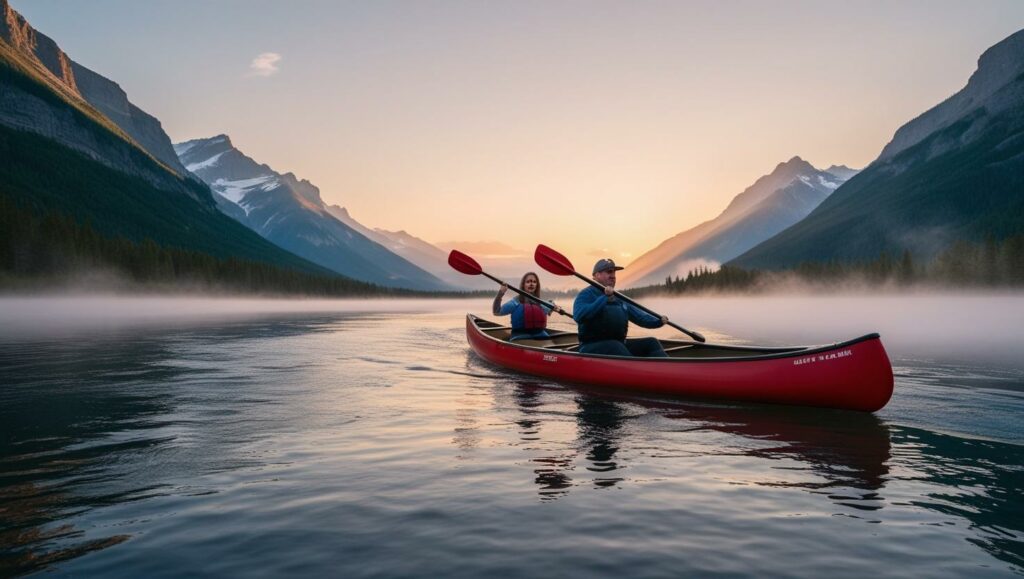
In addition, many paddling communities offer workshops and training sessions which are ideal for those still finding their footing. These sessions often cover advanced techniques, emergency procedures, and even environmental conservation tips.
Being part of these activities not only boosts your technical skills but also deepens your respect for the natural surroundings. Over time, you may even find yourself mentoring others, which is a rewarding way to give back to the community and further reinforce your own knowledge.
Furthermore, connecting with experienced paddlers can open opportunities to explore different water bodies, from calm lakes to adventurous rivers. Sharing information about lesser-known spots or upcoming events adds a fun social element to the challenge of paddling.
It also creates a support network, ensuring that you always have someone to turn to if you encounter unexpected situations on the water. Overall, engaging with the community helps round out your experience and makes every outing richer and more informed.
Preparing for the Unexpected
Your time on the water may encounter unexpected challenges such as sudden weather changes or minor equipment failures. I have learned that keeping calm and being well-prepared often makes these events less stressful.
I always review weather reports in advance and prepare my gear accordingly. Additional safety measures, like carrying a whistle and a spare paddle, are small investments in your peace of mind. Over time, I have adjusted my checklist to ensure that every trip is both enjoyable and secure.
Wrapping Up My Experience with New Gear
Stepping onto a kayak or canoe for the first time can be as intimidating as it is exciting. I have seen firsthand how the right set of gear transforms the experience by providing both security and increased enjoyment. The items listed in this article have served as the cornerstone of my water adventures, and they remain reliable choices for beginners in the sport.
I encourage beginners to treat every outing as a learning opportunity. Experiment with different techniques, take note of the gear you use, and adjust your setup gradually as your skills improve. Whether you are planning a short day trip or a weekend adventure, having a complete and well-chosen set of equipment can boost your confidence and make every excursion more memorable.
Gear plays a very important role in paddling because it connects you practically with the water. The effort put into selecting quality equipment not only makes your safety a priority but also often results in a more rewarding encounter with nature. By staying sharp about maintenance and preparation, you ensure that every trip is smooth and enjoyable.
I hope that this guide helps you build a solid foundation for your canoeing and kayaking adventures. With the right gear in hand, you can focus on enjoying your journey, improving your skills, and perhaps even stumbling upon new passions along the way. Happy paddling, and may your next outing be both safe and fulfilling!
Most Recent Articles:
- Complete Guide On Tracking Game Animals
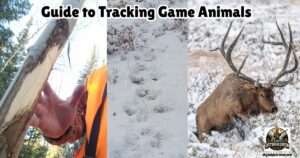
- DIY 4-Step Guide To Field Dressing And Quartering A Deer

- Night Vision Binoculars For Nocturnal Hunting
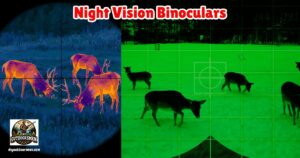
- The Science Behind Camouflage Patterns For Deer Hunting

- Binocular Accessories For Hunters

- 9 Tips for Using Trail Cameras To Track Deer Movements

As always, stay safe, enjoy the journey, and please try to leave it cleaner than you found it. If you have any comments, questions, ideas, or suggestions, please leave them in the comment section below, and I’ll get back to you ASAP. You can follow us on YouTube: Man Art Creations for videos of our DIY Adventures.
P.S. Thanks so much for checking out our blog; we really appreciate it. Just so you know, we may receive a commission if you click on some of the links that appear on our site. This helps us keep our content free and up-to-date for everyone. We appreciate your support!
